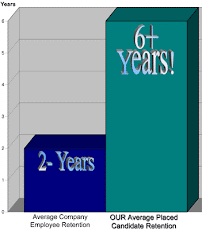Many of the problems Aetna faced were attributed to its culture—especially its reverence for the company’s 150-year history. Once openly known among workers as “Mother Aetna,” the culture encouraged employees to be steadfast to the point that they’d become risk-averse, tolerant of mediocrity, and suspicious of outsiders. The prevailing executive mind-set was “We take care of our people for life, as long as they show up every day and don’t cause trouble.” Employees were naturally wary of any potential threat to that bargain. When Aetna merged with U.S. Healthcare, a lower-cost health care provider, in 1996, a major culture clash ensued. But instead of adapting to U.S. Healthcare’s more-aggressive ways, the conservative Aetna culture only became more intransigent. Aetna’s leaders could make little headway against it, and one CEO was forced out after failing to change it.
What Aetna’s management didn’t recognize was that you can’t trade your company’s culture in as if it were a used car. For all its benefits and blemishes, it’s a legacy that remains uniquely yours. Unfortunately, it can feel like a millstone when a company is trying to push through a significant change—a merger, for instance, or a turnaround. Cultural inclinations are well entrenched, for good or bad. But it’s possible to draw on the positive aspects of culture, turning them to your advantage, and offset some of the negative aspects as you go. This approach makes change far easier to implement.
In late 2000, John W. Rowe, MD, became Aetna’s fourth CEO in five years. Employees skeptically prepared for yet another exhausting effort to transform the company into an efficient growth engine. This time, however, they were in for a surprise. Rowe didn’t walk in with a new strategy and try to force a cultural shift to achieve it. Instead, right from the start, he, along with Ron Williams (who joined Aetna in 2001 and became its president in 2002), took time to visit the troops, understand their perspective, and involve them in the planning. With other members of the senior team, they sought out employees at all levels—those who were well connected, sensitive to the company culture, and widely respected—to get their input on the strategy as well as their views on both the design and execution of intended process changes.
These conversations helped Rowe and his team identify Aetna’s biggest problem: A strategy that focused narrowly on managing medical expenses to reduce the cost of claims while alienating the patients and physicians that were key to Aetna’s long-term success. At the same time, they surfaced Aetna’s significant cultural strengths: a deep-seated concern about patients, providers, and employers; underlying pride in the history and purpose of the company; widespread respect for peers; and a large group of dedicated professionals.
These insights led Rowe to rethink his approach to the company’s turnaround. He declared that instead of just cutting costs, the organization would pursue a strategy he called “the New Aetna.” It would build a winning position in health insurance and a strong brand by attracting and serving both patients and health care providers well. That was an appealing proposition but would require significant restructuring; no one’s job was guaranteed. In other words, it was the kind of change that Mother Aetna traditionally resisted with every passive-aggressive move she could muster.
But this time, without ever describing their efforts as “cultural change,” top management began with a few interventions. These interventions led to small but significant behavioral changes that, in turn, revitalized Aetna’s culture while preserving and championing its strengths. For instance, the New Aetna was specifically designed to reinforce employees’ commitment to customers—reflected in the firm’s history of responding quickly to natural disasters. Rowe also made a point of reinforcing a longtime strength that had eroded—employees’ pride in the company. When, in an off-the-cuff response to a question at a town hall meeting, he highlighted pride as a reason employees should get behind change, he received a spontaneous standing ovation.
So while the plan for change challenged long-held assumptions (among other things, it would require the elimination of 5,000 jobs, with more cuts likely to come), it was embraced by employees. They had been heard and appreciated, and they came to accept the New Aetna.













